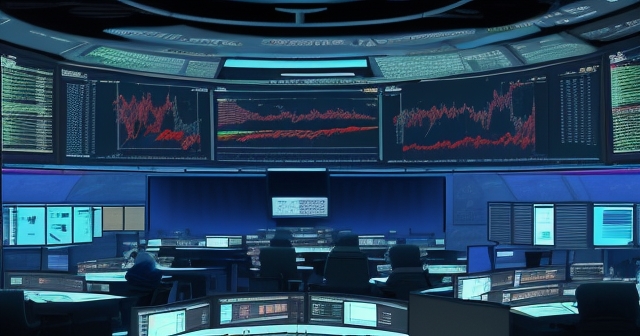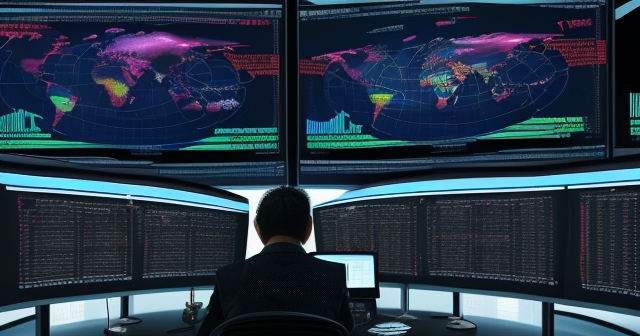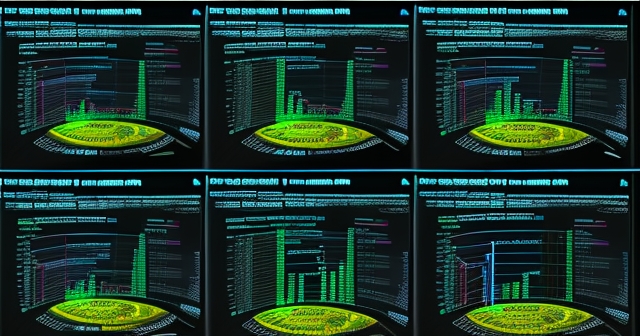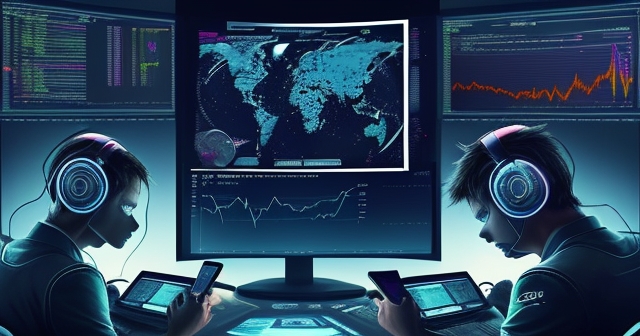Navigating the Digital Landscape of Knowledge and Value: Lessons for the Modern Trader
In today’s fast-paced digital world, we are bombarded with information, signals, and opportunities. Discerning what is real, what is reliable, and where true value lies is more challenging than ever. This holds true whether you’re pursuing academic excellence, seeking professional certification, or navigating the complex markets as a trader. The very nature of integrity and trust is being reshaped by technology, creating new challenges and demanding new approaches to assessment, verification, and even self-awareness. By examining how technology and human psychology intersect in the context of maintaining integrity, such as in online assessments, we can gain powerful insights that are surprisingly relevant to your journey in trading and technical analysis. After all, successful trading is built on reliable information, robust systems, disciplined psychology, and a deep understanding of patterns – areas profoundly impacted by the themes we will explore.

The Expanding Arsenal: How Technology Reshapes the Challenge to Integrity
Think back to traditional exams or assessments. Cheating might have involved a hastily scribbled note, a quick glance at a neighbor’s paper, or perhaps exchanging answers before or after a test. These methods were largely physical and relatively limited in scope. The digital age, however, has ushered in an entirely new set of tools and techniques. Just as technology has revolutionized the way we trade, providing instant access to global markets, advanced charting tools, and algorithmic execution, it has also created sophisticated new avenues for circumventing traditional safeguards in assessments.
- High-tech methods now include the use of smartphones and tablets during examinations.
- Remote access software enables external parties to assist during tests.
- Cheating techniques are rapidly evolving as technology advances.
Today, the challenge often involves high-tech methods on online proctored tests. We see the use of smartphones, tablets, and even discreet wireless earphones allowing external parties to relay answers or information in real-time. Remote access software, like Team Viewer, can enable someone else to control the test-taker’s computer, effectively having an expert take the exam for them. Older tech tricks, such as exploiting vulnerabilities in platform code using browser developer tools like ‘Inspect Element’ in platforms like Microsoft Forms, were once possible, though major testing platforms have largely patched these specific loopholes. The point is, technology moves quickly, and the methods used to gain an unfair advantage are constantly evolving, mirroring the rapid technological advancements and the perpetual search for an ‘edge’ in financial markets.
Consider the parallel in trading. Algorithmic trading, high-frequency trading, and sophisticated analytical software leveraging machine learning weren’t possible decades ago. These technologies offer immense potential for profit, but they also introduce new complexities. The speed and interconnectedness they enable can amplify risks, and understanding how these systems work (and potentially fail or are manipulated) is crucial. Just as test proctors must understand the latest gadgets and software used for cheating, traders must understand the technology driving market movements and the tools at their disposal.

The AI Factor: Unmasking Patterns in Artificial Intelligence Responses
Perhaps the most significant recent technological shift impacting assessments is the rise of generative Artificial Intelligence, particularly large language models like ChatGPT. While much public discussion initially focused on AI’s ability to write essays or generate code, its potential use in answering multiple-choice questions on standardized tests is a more subtle but significant concern. Imagine the scenario: a student taking an online multiple-choice exam could theoretically input questions into an AI on another device and receive answers.
However, the story gets more interesting when we look at the patterns in AI’s performance. Recent research, notably a study led by Kenneth Hanson and Ben Sorenson at Florida State University (FSU), has delved into this. They found that while ChatGPT 3.5 performed reasonably well on multiple-choice questions, it exhibited a peculiar pattern: it was nearly 100% accurate on difficult questions but incorrectly answered *easy* questions at a surprisingly high rate. Why might this be? One hypothesis is that the vast training data AI is exposed to includes complex concepts and nuanced information, making it proficient at handling intricate problems. However, easy questions often require a simpler, more direct understanding or common sense that the AI might overthink or misinterpret based on its massive, sometimes contradictory, training data. It might find the obvious answer ‘too simple’ and search for a more complex interpretation that isn’t there.
This discovery is a breakthrough for detection. Hanson and Sorenson developed a method using psychometric analysis of test responses that could identify ChatGPT use with nearly 100% accuracy by looking for this specific ‘easy questions wrong, hard questions right’ pattern. This is a fascinating example of how understanding the unique ‘behavior’ or ‘patterns’ of a system (in this case, an AI) can be used to verify authenticity or detect anomalies. For a trader, this concept resonates deeply. Technical analysis, at its core, is about identifying patterns in price and volume data to predict future movements. But it’s not just about seeing the pattern; it’s about understanding *why* the pattern might be forming, what forces are at play, and recognizing when a pattern is *not* behaving as expected – an anomaly that might signal something important, or perhaps that your initial interpretation was flawed.

Just as researchers analyze AI’s response patterns, we as traders analyze market patterns. We look for head and shoulders formations, double tops, trends, and reversals. But we must also be aware that these patterns can be misleading, influenced by external factors, or even deliberately faked (in the case of market manipulation). Understanding the underlying mechanics – be it human psychology driving panic selling or institutional algorithms executing large orders – is just as important as recognizing the shape on the chart. The FSU study teaches us that even sophisticated systems like AI can have detectable ‘tells’ if you know what specific patterns to look for.
The Arms Race Continues: Proctors, Platforms, and Market Security
The development of detection methods like the one from FSU is part of a larger, ongoing ‘arms race’. As technology makes cheating easier, the systems designed to prevent and detect it become more sophisticated. Proctoring services now employ lockdown browsers that restrict access to other applications and websites, utilize multiple camera feeds to monitor the test-taker and their environment, and sometimes even use eye-tracking or keystroke analysis software. This mirrors the financial world, where exchanges and regulatory bodies implement increasingly complex surveillance systems to detect insider trading, market manipulation, and other illicit activities, while those seeking to exploit loopholes develop ever more sophisticated strategies.
| Method of Cheating | Description |
|---|---|
| Smartphones and Tablets | Used to communicate answers or access information during exams. |
| Remote Access Software | Allows external assistance in real-time, effectively letting someone else take the exam. |
| Browser Exploits | Exploits vulnerabilities in software to gain an unfair advantage. |
However, implementing these advanced detection methods is not always simple or universally adopted. While large organizations like major testing services (such as ACT or Pearson VUE) or large-scale proctoring companies (like Proctorio or Turnitin, though Turnitin focuses more on text generation) have the data volume and resources to potentially implement sophisticated AI pattern detection or other advanced analytics, doing so requires significant investment in technology and expertise. For individual educators or smaller institutions, deploying highly accurate AI detection methods based on specific model quirks like the FSU study’s findings might be prohibitively difficult and costly. This creates a gap where new technologies like AI can outpace detection capabilities, at least temporarily.
Think about this in terms of trading platforms and market infrastructure. Major exchanges and brokers invest heavily in security, speed, and reliability. They use cutting-edge technology to ensure fair and orderly markets. However, sophisticated traders and trading firms also invest heavily in technology to gain an edge – faster execution, more powerful analysis, potentially exploiting micro-lags or specific order book dynamics. It’s a continuous cycle of innovation and counter-innovation. When you choose a trading platform, you are essentially choosing a partner in this technological arms race. You need a platform that is reliable, secure, and provides the tools necessary to compete, while also trusting that the underlying market infrastructure is doing its best to ensure fairness.
If you’re looking for a platform that understands the importance of robust technology and reliability in this competitive landscape, Moneta Markets is a platform worth considering. Hailing from Australia, it provides access to over 1000 financial instruments, making it a versatile choice for both novice and professional traders. Their commitment to offering a strong technological foundation is crucial in navigating today’s markets.
Beyond External Rewards: The Psychology of Self-Deception
Why do people cheat? The obvious answer is often tied to external incentives: getting a better grade, securing a job, earning a certification for career advancement. However, research suggests the motivations can be far more complex and deeply psychological. Sara Dommer and her colleagues at Penn State and Stanford University have researched the psychological underpinnings of cheating, finding that people sometimes cheat not just for external rewards, but for *intrinsic* ones. They might cheat simply to feel smarter, more competent, or even healthier, without any external incentive tied to the assessment outcome.
This connects to a fascinating concept called diagnostic self-deception. This is when individuals attribute their improved performance, which was achieved dishonestly, to their own innate ability rather than the cheating itself. By deceiving themselves, they get to experience the intrinsic reward of feeling capable and intelligent without consciously acknowledging the unethical behavior that led to the result. It’s a way the mind protects its self-image. For example, someone might use a cheat sheet, get a high score, and then genuinely believe, “Wow, I guess I knew more of that than I thought I did!” – effectively erasing the dishonest act from the narrative of their success.
How does this apply to trading? Trading is a field rife with opportunities for self-deception. After a string of winning trades, especially if they were based on luck or following someone else’s signals rather than rigorous analysis, a trader might fall victim to diagnostic self-deception, believing they possess a level of skill or insight that isn’t truly there. This overconfidence can lead to taking on excessive risk, abandoning sound risk management principles, and ultimately, significant losses. Conversely, after losing trades, traders might blame external factors (market manipulation, the broker, bad luck) rather than confront flaws in their own analysis or strategy – another form of self-deception protecting the ego.

Understanding diagnostic self-deception from the cheating research gives us a powerful lens through which to examine our own trading psychology. Are you genuinely assessing your performance based on objective criteria and disciplined execution, or are you allowing your ego to rewrite the narrative? Recognizing that the desire to feel smart or successful can unconsciously drive us to attribute false reasons for our outcomes is the first step towards building genuine self-awareness and discipline in trading.
The Stakes of Integrity: Devalued Credentials and Platform Reliability
The consequence of widespread cheating in assessments is a devaluation of the credentials earned. If professional certifications can be obtained through dishonest means, the public trust in those holding those certifications erodes. Organizations like the National Institute for Certification in Engineering Technologies (NICET) have very strict policies and severe penalties for cheating on their exams or falsifying experience documentation. Penalties can range from multi-year bans to lifetime bans from seeking certification. This underscores the high stakes involved: protecting the integrity and value of the certification for all legitimate holders and for the industries that rely on them.
This concept of devalued credentials maps directly onto the importance of choosing reliable and trustworthy tools and partners in trading. Just as a certification is devalued if it can be faked, your trading education and analysis methods are devalued if you rely on unreliable data, questionable ‘expert’ advice from unregulated sources, or platforms that lack integrity or security. The value you gain from diligent study, practicing technical analysis, and developing a sound strategy depends entirely on the reliability of the environment in which you operate – including your trading platform.
| Penalty for Cheating | Description |
|---|---|
| Multi-Year Ban | Temporary suspension from the certification process. |
| Lifetime Ban | Permanent disqualification from seeking certification. |
| Integrity Violation | Damage to the reputation of the certification holding organizations. |
Consider the critical role your trading platform plays. It’s your gateway to the market, the tool through which you execute trades, access charting, and manage risk. If the platform is unreliable, experiences frequent outages, has poor execution speed, or lacks strong regulatory oversight, it can undermine even the best analysis and strategy. The integrity of your trading operation relies heavily on the integrity and reliability of your broker and platform.
When evaluating potential brokers, look for strong regulation and a proven track record. Moneta Markets, for example, is regulated by authorities like FSCA, ASIC, and FSA. They offer funds segregated in trust accounts, free VPS for algorithmic traders, and 24/7 multilingual customer support. These features aren’t just conveniences; they are components of a system designed to provide reliability and build trust, much like stringent anti-cheating measures protect the value of a professional certification.
Building Your System of Reliability: Lessons from Detection
How do institutions and researchers fight cheating? They build systems based on rules, monitoring, analysis, and verification. Lockdown browsers enforce rules. Multiple cameras provide monitoring. Psychometric analysis identifies anomalies (like AI patterns). Falsified documentation is verified. This systematic approach to ensuring integrity in assessments offers a blueprint for building a robust and reliable trading system.
Your trading system should also have layers of ‘detection’ and verification.
Here are some parallels:
- Rule Enforcement (Lockdown Browser): Do you have strict rules for your trading? Entry criteria, exit criteria, position sizing, maximum risk per trade? Are you enforcing these rules diligently, or allowing emotions or impulses to bypass them?
- Monitoring (Multiple Cameras): Are you monitoring your trades objectively? Keeping a detailed trading journal? Reviewing your performance regularly without bias? This is your surveillance system for identifying what works and what doesn’t, and spotting psychological pitfalls.
- Anomaly Detection (AI Pattern Analysis): Are you looking for unexpected patterns in market behavior, or perhaps unexpected results from your own strategy? The FSU study showed that looking for deviations from expected behavior (AI getting easy questions wrong) can be highly revealing. In trading, this might mean noticing when a standard chart pattern fails in a specific market condition, or when your win rate suddenly drops without a clear market change. Identifying these anomalies is key to adapting.
- Verification (Document Checks): Are you verifying your information sources? Is the economic data reliable? Is the news legitimate? Is the indicator code correct? In a world filled with noise, verifying the integrity of your inputs is paramount.
- Psychological Safeguards: Beyond just technical rules, what safeguards do you have against self-deception or emotional trading? This could involve stepping away from the screen after a loss, having a trading buddy for accountability, or practicing mindfulness.
Building such a system is not about perfection, but about creating layers of defense against errors – whether they stem from unreliable data, flawed analysis, or your own psychological biases. Just as test administrators seek to create a fair and reliable testing environment, you must strive to create a fair and reliable trading environment for yourself.
In choosing a platform, consider the tools they provide to help you build this reliable system. Platforms supporting advanced charting (like those on MT4, MT5, or Pro Trader), offering economic calendars, news feeds, and robust account analytics contribute to your ability to monitor, analyze, and verify. A platform with high-speed execution and low spreads, which Moneta Markets aims for, also helps ensure that the outcome of your trade is a reflection of your analysis and market conditions, not platform inefficiencies.
Navigating Uncertainty: Embracing the Unknown
Interestingly, the research on diagnostic self-deception also suggests a potential way to mitigate it: drawing attention to the uncertainty surrounding the assessed trait can reduce cheating. If test-takers are made more aware that the exam is just one snapshot of their knowledge, or that the concept being tested is complex and multifaceted, they may be less likely to attribute success from cheating solely to their innate ability. This awareness of uncertainty makes self-deception harder to maintain.
This insight is incredibly valuable for traders. The financial markets are inherently uncertain. No amount of analysis can predict the future with 100% certainty. Yet, many traders seek absolute certainty, falling prey to strategies or indicators that promise guaranteed results. This desire for certainty can make them vulnerable to scams or lead them to ignore contradictory signals, another form of self-deception where they convince themselves they are “right” despite mounting evidence to the contrary.

Embracing the inherent uncertainty of the market is not a weakness; it is a strength. It encourages humility, promotes rigorous risk management, and makes you more adaptable. When you accept that any single trade could fail, regardless of how strong the signal seems, you are less likely to overcommit or become emotionally attached to an outcome. Just as acknowledging the uncertainty of an assessment can reduce the psychological drive to cheat, acknowledging the uncertainty of the market can reduce the psychological drive to engage in self-deception about your skills or the reliability of a setup.
This perspective aligns perfectly with the principles of risk management – defining your potential loss *before* entering a trade because you understand that the outcome is not guaranteed. It’s about focusing on managing the process and acknowledging that individual outcomes are subject to variability. This shift from seeking certainty to managing uncertainty is a hallmark of mature trading.
The Ethical Dimension in a Digital World
The discussion around cheating, particularly with technology, brings us to the topic of digital ethics. Surveys, like one by Common Sense Media, have shown a significant percentage of teenagers admit to using cell phones to cheat on tests, whether by texting answers or searching online. There’s a perceived “ethical disconnect” – perhaps because digital actions feel less ‘real’ or less severe than physical cheating. This highlights a need for education on ethical behavior in the digital realm, relevant not just to students but to everyone operating online, including traders.
For traders, ethics extend beyond simply avoiding illegal activities like insider trading or market manipulation. It involves maintaining personal integrity in your trading process. Are you being honest with yourself about why a trade failed? Are you sticking to your pre-defined rules even when it’s difficult? Are you being transparent (if applicable) about your methodologies? Are you avoiding promoting unrealistic expectations or ‘get rich quick’ schemes if you interact with other traders?
Just as the value of academic or professional credentials relies on the collective commitment to integrity, the health and fairness of the trading environment (and your place within it) depend on ethical conduct. Understanding the ease with which technology can be used for deception in other areas should heighten our awareness of the potential for similar issues in finance and reinforce the importance of maintaining a strong ethical compass in our own trading activities.
Connecting the Dots: Insights from Assessments for Trading Mastery
At first glance, the evolving world of academic and professional assessment integrity might seem far removed from the daily concerns of a financial trader focused on charts, indicators, and market news. However, as we’ve explored, the underlying challenges and human behaviors are remarkably similar. The rapid advancement of technology, the constant arms race between security and circumvention, the subtle power of psychological biases like self-deception, the critical importance of reliability and trust, and the fundamental need for integrity are universal themes that profoundly impact success in any complex, competitive field – including trading.
Understanding how systems are built and potentially exploited, how patterns (even unexpected ones) can reveal hidden truths, how our own minds can work against us, and why the value of legitimate knowledge and trustworthy platforms is paramount provides a richer, more nuanced perspective on the challenges you face as a trader. It reinforces the need for continuous learning, not just about market mechanics, but about the broader forces shaping our digital world and human behavior.
Whether you are just starting out or have years of experience, applying lessons from seemingly unrelated fields can sharpen your analytical skills, improve your psychological discipline, and strengthen your approach to risk management. By viewing the market through a lens informed by rigorous research and real-world challenges, you are better equipped to navigate uncertainty, identify true opportunities, and build a sustainable path towards achieving your trading goals.
how to cheat on quizzesFAQ
Q:What are some common cheating methods in digital assessments?
A:Common methods include using smartphones for answers, remote access software, and exploiting platform vulnerabilities.
Q:How has AI impacted cheating in assessments?
A:AI can provide answers in real-time but can also exhibit detectable patterns that may indicate cheating.
Q:What are the penalties for cheating on professional certifications?
A:Penalties can include multi-year bans or lifetime bans from seeking certification, undermining the integrity of the credentials.
